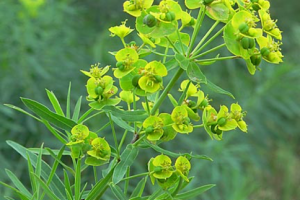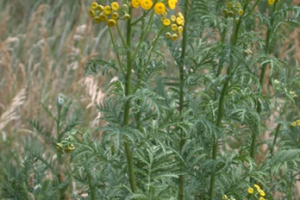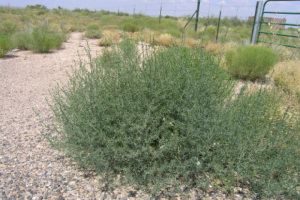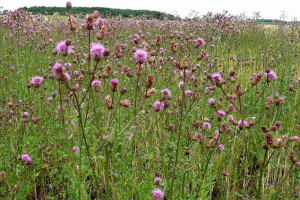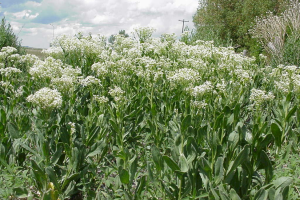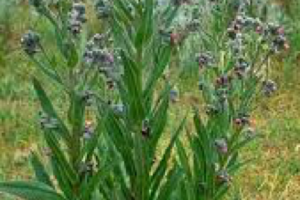A robust perennial that grows up to five feet in height, Common Tansy has aromatic, fern-like leaves. It flowers in July in Montana, producing flower cluster on top with button-like yellow heads.
Considered toxic to horses and cattle, tansy is un-palatable to livestock but can be an issue if cultivated in hay and consumed. The oils in the leaves can cause skin irritation and ulcers in humans so gloves should always be worn if pulling live plants.
The pilgrims brought common tansy seed to the United States as early as 1631, because of its many medicinal uses… In the 1600s, the Massachusetts governor called common tansy a necessity… and encouraged even more extensive planting in the garden… Europeans and colonial Americans used common tansy in a face wash to lighten and purify skin, to treat ulcers, constipation, and hysteria, to restore menstrual flow, treat intestinal worms, rheumatism, jaundice, and digestive problems, and in large doses to induce abortion [women have died from this] but in smaller doses it was thought to prevent miscarriage and increase fertility… The northern Cheyenne of Montana called common tansy “yellow medicine”, and its leaves and flowers were made into a tea and given to those feeling weak.
Tansy spreads by seed and by an extensive root system. Pulling or mowing has little effect on tansy, except to reduce seed production. Most of the big roots are near the surface, so it may feel like you can pull up smaller plant roots and all, but it almost always comes back again and again. Tansy regenerates from root fragments, so cultivation could expand the size of an infestation.
Tansy can be controlled effectively with herbicides designed to kill the extensive root system. Treated stands of tansy should be monitored for new growth coming from the root system and treated accordingly.

